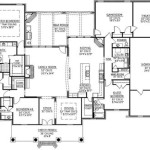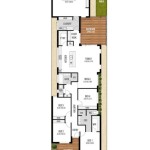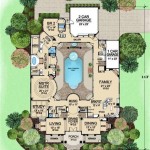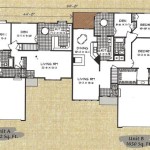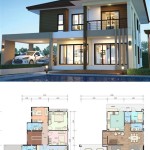Floor Plan of a House: A Guide to Design and Functionality
A floor plan is a visual representation of a house's layout, depicting the arrangement of rooms, walls, and spaces from above. It serves as a blueprint for understanding the spatial relationships within a home, aiding in the design, construction, and interior decoration processes. Whether you're building a new house or renovating an existing one, understanding floor plans is crucial for creating a functional and aesthetically pleasing living space. ### Types of Floor Plans 1.Single-Story Floor Plan:
This layout features all living areas on one level. It's commonly found in bungalows, ranch-style homes, and smaller residences. Single-story floor plans are often preferred for their ease of movement and accessibility, making them suitable for individuals with mobility challenges or families with young children. 2.Multi-Story Floor Plan:
This layout typically has multiple levels, such as a basement, ground floor, and upper floors. Multi-story floor plans are suitable for larger homes and offer a sense of separation between living areas and private spaces. They also provide opportunities for creating mezzanines, balconies, and other unique architectural features. 3.Open Floor Plan:
An open floor plan minimizes walls and partitions, creating a visually connected living space. It seamlessly integrates the kitchen, living room, and dining room into a single, expansive area. Open floor plans foster a sense of spaciousness and encourage social interaction, making them ideal for modern, contemporary homes and small apartments. ### Elements of a Floor Plan 1.Rooms:
The primary components of a floor plan are the rooms, including bedrooms, bathrooms, living rooms, kitchens, and dining rooms. Each room has a specific function and design considerations, such as size, shape, and layout. The arrangement of rooms determines the overall flow and functionality of the house. 2.Walls:
Walls define the boundaries of rooms and provide support for the structure. They can be load-bearing or non-load-bearing, affecting the flexibility of the floor plan. Walls also serve as a canvas for interior design, allowing for the application of paint, wallpaper, and other decorative elements. 3.Doors and Windows:
Doors and windows provide access to rooms, allow for ventilation, and bring in natural light. Their placement and design impact the traffic flow, privacy, and overall aesthetics of the home. 4.Stairs:
In multi-story floor plans, stairs connect different levels of the house. Stairs can be straight, curved, or spiral, adding visual interest and functionality to the space. 5.Kitchen and Bathroom Fixtures:
Floor plans also include the placement of kitchen appliances, sinks, countertops, and bathroom fixtures like toilets, sinks, and bathtubs. These elements should be carefully positioned to ensure proper functionality and ergonomics. ### Design Considerations for a Floor Plan 1.Functionality:
The primary goal of a floor plan is to create a functional living space that meets the needs and lifestyle of the occupants. Consider the flow of traffic, accessibility of rooms, and the relationship between different areas of the house. 2.Privacy:
Different rooms have varying levels of privacy requirements. Bedrooms and bathrooms, for instance, should be located in quieter areas to ensure privacy. 3.Natural Light:
Maximizing natural light through windows and skylights not only enhances the ambiance of the home but also reduces the need for artificial lighting, leading to energy savings. 4.Energy Efficiency:
A well-designed floor plan can contribute to energy efficiency. For example, positioning windows and doors strategically can help with passive heating and cooling, reducing the reliance on heating and air conditioning systems. 5.Aesthetics:
Beyond functionality, the floor plan should also reflect the desired aesthetic of the home. Whether it's a traditional, modern, or rustic style, the layout should complement the overall design theme. ### Conclusion Floor plans are essential tools for architects, builders, and homeowners alike. They provide a visual representation of a house's layout, allowing for informed decisions about room arrangement, functionality, and aesthetics. By carefully considering the elements and design principles discussed above, you can create a floor plan that optimizes space, enhances livability, and reflects your personal style, creating a home that truly meets your needs and aspirations.
Floor Plans Types Symbols Examples

House Plans How To Design Your Home Plan

Small House Plan Ideas For Diffe Area To See More Read It Floor Plans

Floor Plans Types Symbols Examples

Top Tips For Choosing A Floor Plan Your New Home

Small House Design 2024001 Pinoy Eplans Floor Plans

Peach Tree House Plan Ranch Floor Designs

Modern Open Floor House Plans Blog Eplans Com

Living Options Webster House

Small House Design 2024005 Pinoy Eplans Modern Plans Floor

